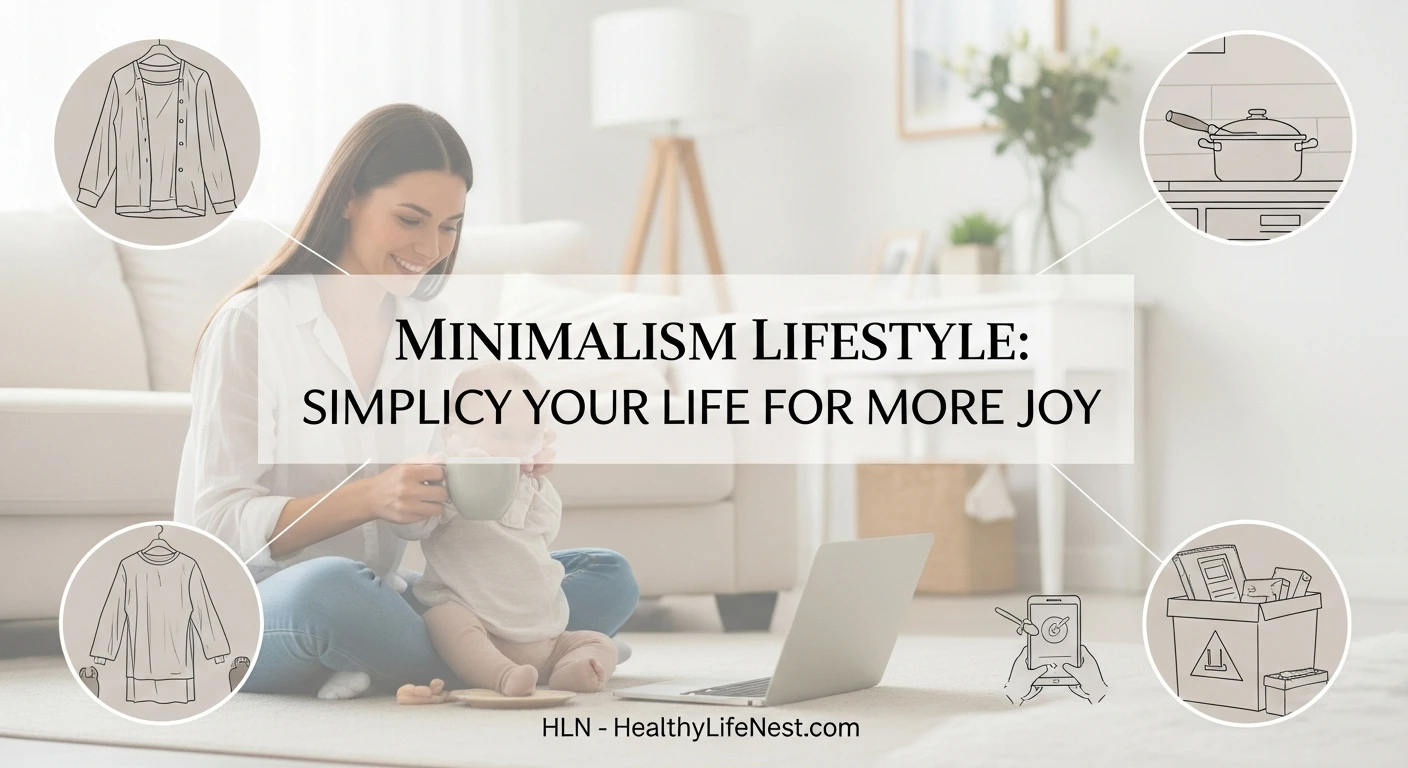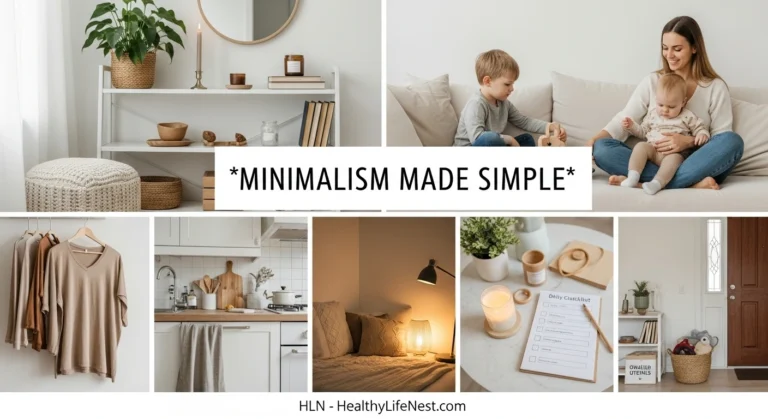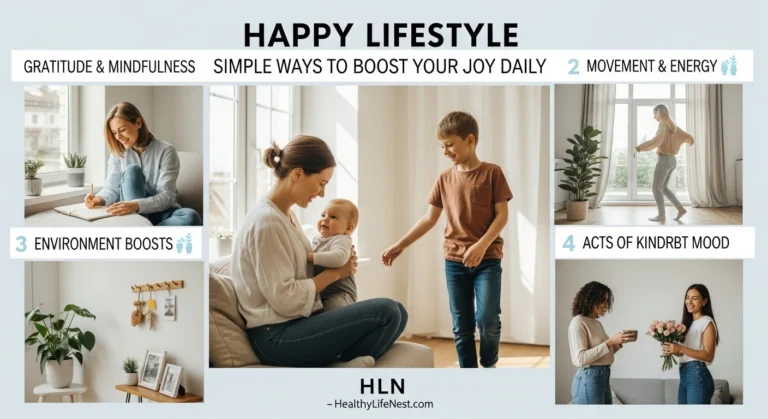Minimalism Lifestyle : Simplify Your Life for More Joy
A minimalism lifestyle is about living with less to gain more freedom, peace, and happiness. It’s not just about decluttering your home but also about focusing on what truly matters. This guide explains how to embrace minimalism in a practical way, perfect for beginners and Pinterest users in Europe and America who want a simpler life.
What Is a Minimalism Lifestyle?
Minimalism is about owning fewer things and prioritizing quality over quantity. It’s a way to cut out distractions and focus on experiences, relationships, and personal growth. By letting go of excess, you create space for what brings joy and meaning.
Why Choose Minimalism?
Living minimally can transform your life. It reduces stress, saves money, and helps the environment. You spend less time cleaning or organizing and more time enjoying life. For many, it’s a path to mental clarity and financial freedom.
Benefits of Minimalism
| Benefit | Description |
|---|---|
| Less Stress | Fewer possessions mean less to manage and worry about. |
| More Savings | Buying less helps you save money for meaningful experiences. |
| Eco-Friendly | Owning fewer items reduces waste and supports sustainability. |
| Better Focus | Clear spaces help you concentrate on goals and passions. |
How to Start a Minimalism Lifestyle
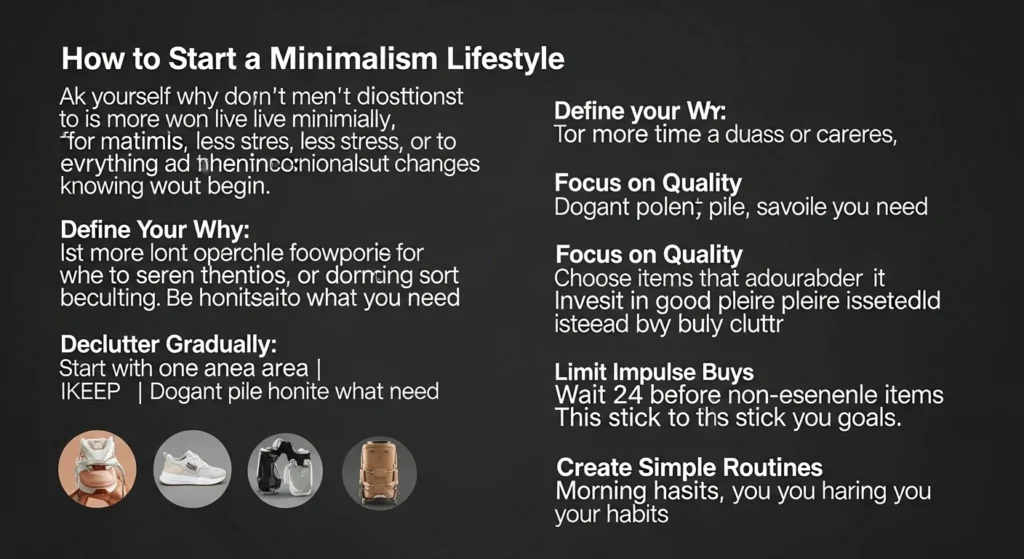
Starting minimalism doesn’t mean throwing everything away. It’s about making small, intentional changes. Here’s how to begin:
- Define Your Why: Ask yourself why you want to live minimally. Is it for more time, less stress, or to save money? Knowing your purpose keeps you motivated.
- Declutter Gradually: Start with one area, like a drawer or closet. Sort items into keep, donate, or discard piles. Be honest about what you need.
- Focus on Quality: Choose items that are durable and meaningful. For example, invest in a good pair of shoes instead of buying five cheap pairs.
- Limit Impulse Buys: Wait 24 hours before purchasing non-essential items. This helps you avoid clutter and stick to your goals.
- Create Simple Routines: Simplify daily tasks, like meal planning or morning habits, to save time and energy.
Minimalism in Your Home
Your home is the perfect place to practice minimalism. A clutter-free space feels calm and inviting. Here are some tips:
- Living Room: Keep only essential furniture, like a sofa and a coffee table. Add a few meaningful decor pieces, like a plant or family photo.
- Kitchen: Store only the tools you use daily, like one good knife and a few pots. Donate duplicates or unused gadgets.
- Bedroom: Use neutral bedding and keep surfaces clear. A tidy bedroom promotes better sleep and relaxation.
- Wardrobe: Build a capsule wardrobe with versatile, high-quality clothes. Aim for 30–40 pieces that mix and match easily.
Decluttering Checklist
- Clothes you haven’t worn in a year
- Broken or unused electronics
- Old papers or junk mail
- Duplicate kitchen items
- Decor that doesn’t spark joy
Minimalism Beyond Possessions
Minimalism isn’t just about stuff—it’s a mindset. Apply it to other areas of life for even more impact.
Digital Minimalis
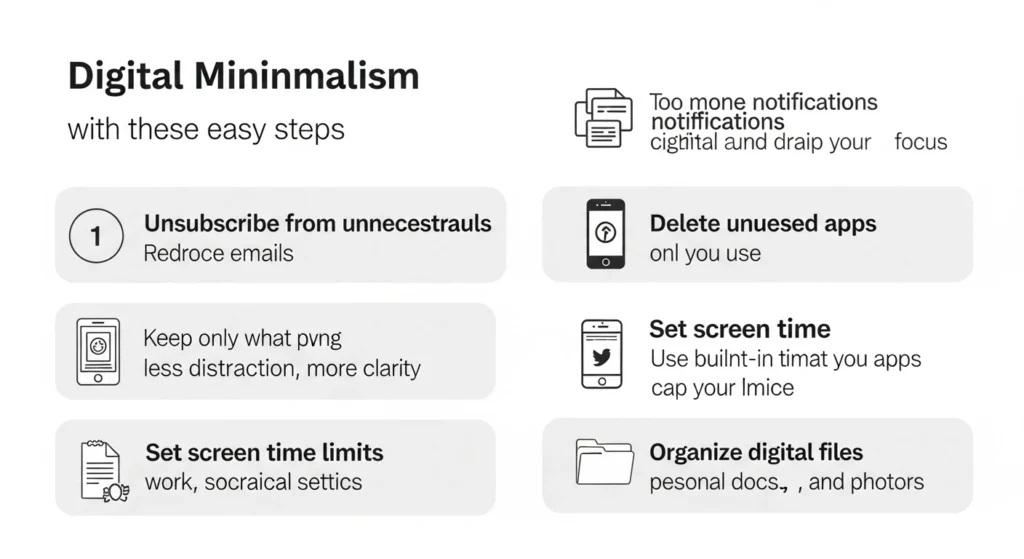
Too many notifications and apps can overwhelm you. Try these steps:
- Unsubscribe from unnecessary emails.
- Delete unused apps from your phone.
- Set screen time limits for social media.
- Organize digital files into clear folders.
Time Management
Simplify your schedule to focus on what matters:
- Say no to commitments that don’t align with your goals.
- Plan your week with a simple to-do list.
- Schedule downtime for rest and hobbies.
Common Minimalism Myths
Some people think minimalism is too restrictive. Let’s clear up a few myths:
| Myth | Truth |
|---|---|
| You must own almost nothing | Minimalism is about owning what you love, not a specific number of items. |
| It’s only for wealthy people | Anyone can practice minimalism, regardless of income. It’s about choices, not money. |
| It’s boring and plain | Minimalist spaces can be cozy and stylish with thoughtful design. |
Challenges of Minimalism
Minimalism isn’t always easy. You might face resistance from family or struggle to let go of sentimental items. Start small and be patient. If others don’t understand, explain how minimalism improves your life. Over time, they may see the benefits too.
Minimalism and Sustainability
A minimalism lifestyle supports the planet. By buying less, you reduce waste and support eco-friendly habits. Choose second-hand items, shop local, or invest in sustainable brands. Small choices, like using reusable bags, make a big difference.
How Minimalism Boosts Happiness
When you let go of excess, you make room for what truly matters. Minimalism helps you focus on relationships, hobbies, and personal growth. It’s not about sacrifice—it’s about creating a life that feels light, purposeful, and joyful.
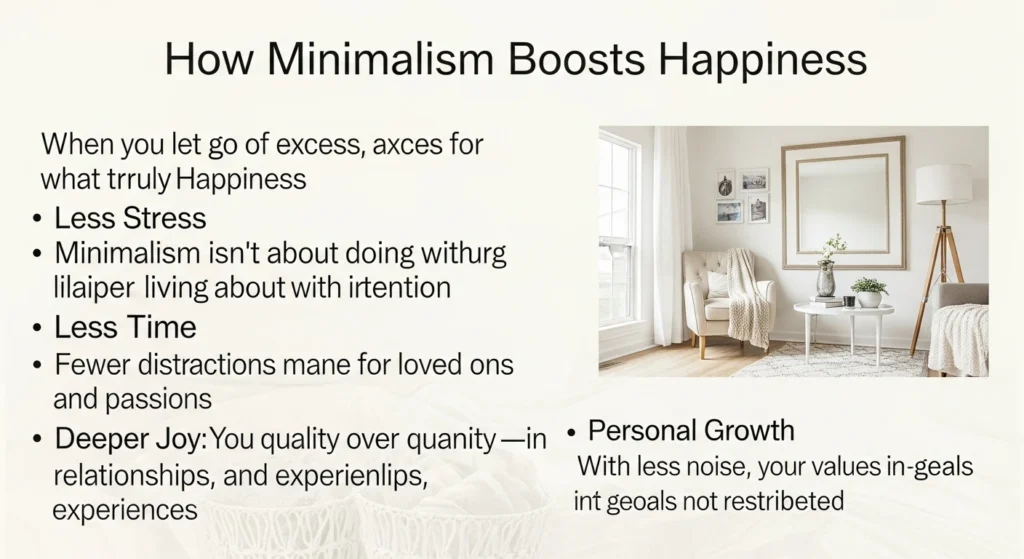
Get Started Today
Ready to try minimalism? Pick one area of your life—your closet, desk, or schedule—and simplify it today. Take it one step at a time, and soon you’ll notice more calm and clarity. Pin your progress on Pinterest to stay inspired and share your journey with others.

